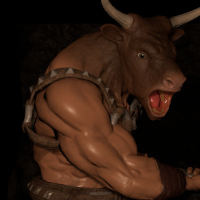I am trying to implement obstacle avoidance in unity as follows: I fire a series of parallel raycasts in the players moving direction, get the closest hit and then multiply hit.normal by steering force to get an avoidance vector.Then I use prioritization blending(have some max steering, I add obstacle avoidance steering first and then add seek steering towards target if I have not already reached max steering). The problem is that If the player is directly behind the wall then the seek direction and hit.normal(aka avoidance direction) is in opposite. Hit. normal seems to work if obstacle is far away but not much so if the obstacle is near. Am I supposed to calculate some other way?(normal component of hit.normal on my velocity vector maybe).
And is it better to have cone raycasts instead of parallel ones?







